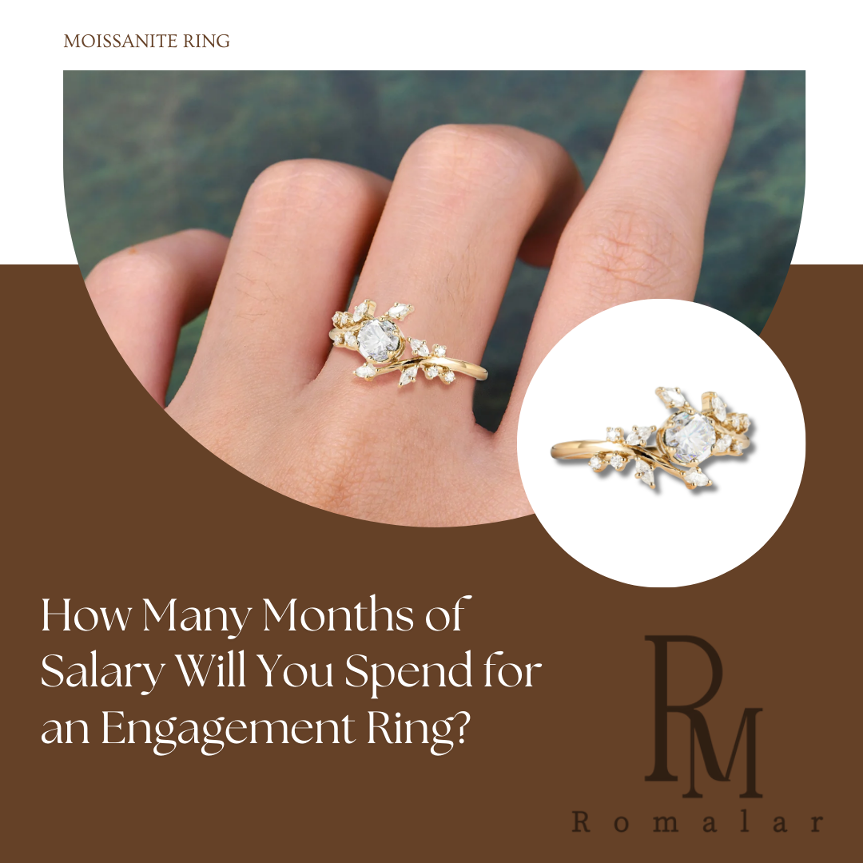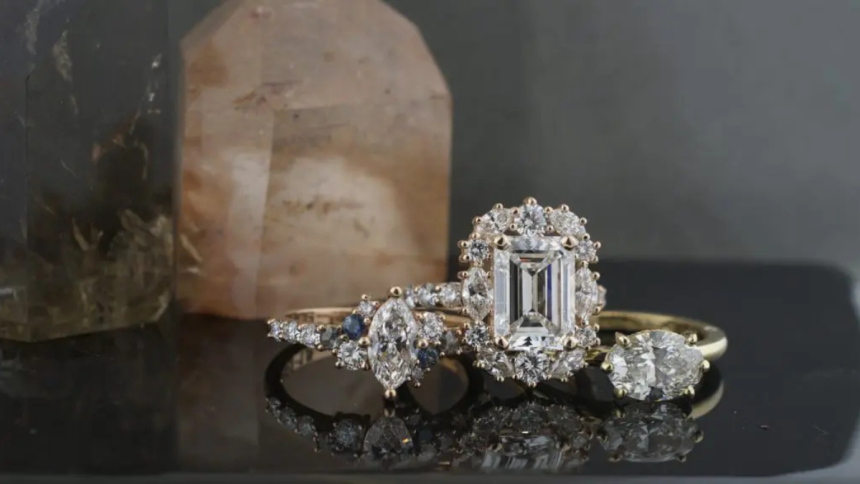The moment has arrived. You’ve found “the one,” and your heart is set on popping the question. But then, a familiar pressure sets in: the engagement ring. From whispered “rules” about how much to spend to dazzling displays on social media, it can feel like navigating a minefield of expectations. Is it really three months’ salary? A month? Or are these just outdated traditions designed to make you sweat?
Today, financial realities and personal values often clash with long-held customs, and the question isn’t just “How much should an engagement ring cost?” It’s “How much is too much and who decides?” So, let’s cut through the noise and discover what truly makes a meaningful and manageable choice for you.

What Do People Actually Spend on Engagement Rings?
Forget the old “three months’ salary” adage. It was largely a marketing ploy, and real-world spending paints a much more diverse picture. While averages can offer a guideline, what people actually spend is influenced by a variety of factors, from location and generational trends to personal priorities.
2024 Averages (U.S./U.K.)
In the United States, recent data indicates that the median cost for an engagement ring is approximately $5,500. However, it’s important to remember this is an average; a significant number of couples spend less, and some spend considerably more.
For instance, some reports indicate that about one in three couples spent between $1,000 and $4,000, while a smaller percentage spent upwards of $10,000.
Across the pond in the United Kingdom, the average spend is typically lower. While figures can vary, recent surveys suggest the median engagement ring cost hovers around £1,500 – £2,000. This often reflects different cultural expectations and a greater openness to various diamond alternatives or smaller carat weights.
Generational Trends
Spending habits are also evolving across generations:
- Older couples (Gen X and Baby Boomers) sometimes tend to spend more, often valuing traditional, classic designs and larger natural diamonds. They may have more established careers and greater accumulated wealth, allowing for a higher budget.
- Younger buyers (Millennials and Gen Z) are often more financially savvy and value experiences over material possessions. They are increasingly prioritising ethical sourcing, sustainability, and unique designs. This often leads them to explore alternatives like lab-grown diamonds, Moissanite, or colored gemstones, which can offer significant cost savings without sacrificing beauty or sparkle. Many younger couples are also more open to discussing budgets openly and even shopping for the ring together.
Gender Gaps:
It’s also worth noting that not everyone buys into the idea of a massive spend. Surveys reveal a significant sentiment among women: as many as 43% of women say they would prefer a cheaper ring if it meant saving money for other important life goals, like a down payment on a home, a dream honeymoon, or future financial stability.
This highlights a shift towards practicality and shared financial goals within relationships, challenging the traditional pressure to spend excessively on an engagement ring.
How to Decide What Price Is Right for You and Your Partner
The truth is, the “right” amount to spend isn’t found in an average. It’s found in what’s right for you and your partner. This means letting go of outdated rules and embracing a more personalised, practical approach.
1. Ditch the Rules, Set Your Own
The “X months’ salary” rule is a myth. Instead, frame your decision around two key perspectives:
Budget-Based: “What can we afford without debt?”
This is the most financially responsible approach. Look at your current income, savings, and any existing debt. Can you comfortably purchase a ring without going into significant debt or depleting your emergency fund? Remember, an engagement ring is the first of many shared financial decisions, and starting off on solid ground is paramount.
Value-Based: “Does she want a diamond, or would she prefer a vacation + Moissanite?”
This shifts the focus from perceived value (carat weight, brand name) to actual value for your partner. Some individuals dream of a classic diamond, while others might prefer a smaller, ethically sourced stone or a beautiful alternative, with the saved money going towards a down payment on a home, a dream honeymoon, or another shared experience. Open communication here is key!
2. Practical Factors to Consider
Beyond just the price tag, several practical elements should influence your choice:
Income/Debt
This is your foundation. Be honest about your financial standing. Are you just starting your career, or are you well-established? Do you have student loans or other significant debts? Your financial comfort level should dictate your spending, not external expectations.
Lifestyle
Consider your partner’s daily life. Do they have an active job that involves working with their hands?
A delicate, high-set stone might not be practical and could be prone to damage. A more durable, low-profile setting or a harder stone might be a better fit. Conversely, if their work is primarily sedentary, a more intricate design could be perfectly fine.
Partner’s Preferences
Ask. Surprises are overrated for big purchases. While the romantic ideal of a surprise proposal is strong, when it comes to something as significant and personal as an engagement ring, knowing your partner’s preferences is invaluable. This doesn’t mean ruining the proposal itself!
Casually ask about their preferred metal (gold, platinum), stone shape (round, oval, emerald), style (vintage, modern, minimalist), and whether they have a strong preference for a natural diamond versus a lab-grown diamond or alternative stone. Many couples even shop together to ensure the ring is exactly what they want.

The Million-Dollar Question (Without the Million-Dollar Price Tag)
If you want the sparkle of the diamond itself but are kinda deterred by the price tag, then you can consider the alternative – a Moissanite ring.
Moissanite rings are rapidly gaining popularity as a brilliant, durable, and more affordable alternative to traditional diamonds. With their exceptional sparkle and eco-friendly origins, they offer a compelling option for couples who prioritise both beauty and conscious consumerism.
When you’re ready to explore options that truly align with your vision and budget, consider Romalar. The brand offers the ability to design your own rings, allowing you to customise every detail from the stone to the setting, ensuring a unique piece that perfectly captures your love story, at a cost that makes sense for you.
Lynn Martelli is an editor at Readability. She received her MFA in Creative Writing from Antioch University and has worked as an editor for over 10 years. Lynn has edited a wide variety of books, including fiction, non-fiction, memoirs, and more. In her free time, Lynn enjoys reading, writing, and spending time with her family and friends.















